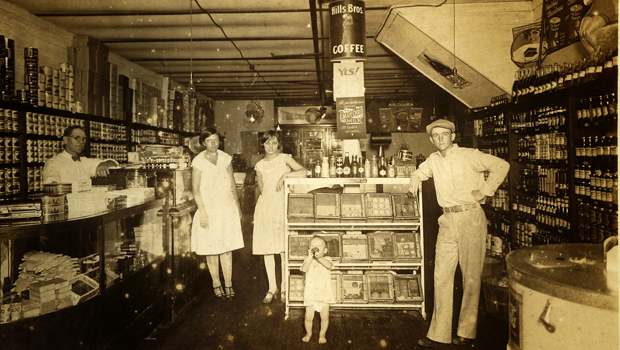Knowing your customers is nothing new. Businesses have been marketing this way for centuries.
Back in the days when people walked to the shops rather than drove to them, businesses succeeded as much from knowing their customers as anything else.
Shopkeepers knew you by name. The pharmacist would remember that you were allergic to penicillin. The local baker would know your son’s birthday and would throw-in a bag of doughnuts when you went there to order the birthday cake.
Business owners would bust a gut to provide knock-em-dead service, not just because they genuinely cared about their customers. They knew that, without their customers, they hadn’t a hope in Hell of staying afloat.
With Mass Production Comes Mass Marketing
This customer / supplier relationship continued pretty much undisturbed until we entered the age of Mass Markets. In order to scale revenues, and therefore profits, businesses scaled-up production. They sought to drive down costs and maximize profits, which often meant aiming their value offering at the middle ground.
This didn’t just work for business – customers benefited too. Consumer purchasing power shot through the roof – much more could be had for a lot less. Machines took over the work of people. Where people still existed, they were expected to operate like machines. However, along the way companies stopped being driven by customers and started being driven purely by the bottom line. Marketing become a shouting competition: the loudest voice (and the fattest wallet) won the game.
Today, instead of big businesses it’s the small companies that are blazing the trail. It’s the small companies that are innovating, disrupting, engaging and generally upsetting the Big Company status quo. Thanks to a combination of an enlightened, empowered customer and the social connectivity implications of internet-based technologies, as customers we’re choosing to deal with companies that treat us like individuals. We want to feel special again, like we did when the shopkeeper addressed us by our name and asked if Grandma was feeling better after her recent bout of ‘flu.
Marketing Becomes More About Connection vs. Retention
Marketing buzzwords like “social media”, “customer engagement” and the rest are nothing more than putting a new name on something that’s been around for as long as commerce has. But success (and maybe even survivability) is no longer about reach, or distribution. It’s easy (or at least easier) to get in front of your audience’s thanks to tools, processes and behaviors that scale further and wider than anything your grandfather could’ve imagined. But what happens then? Once you’ve got their attention, what are you going to do to keep them there?
Unlike before, and perhaps unlike at any other time in history, companies can’t solve this problem with technology – which is probably why most big companies don’t get it. It’s not about the communication channels themselves, it’s about what you communicate. It’s not about having a Facebook page with more fans than your competitor. The future of business isn’t in social media channels, or augmented reality, or chatbots, or iPads.
It’s not about B2B, nor is it about B2C. It’s about P2P: People to People.
All we’ve done is come back to where we were all those years ago. Back to the days when businesses put their customers first.
And that’s exactly how it should be.

